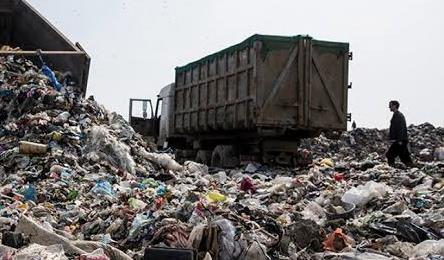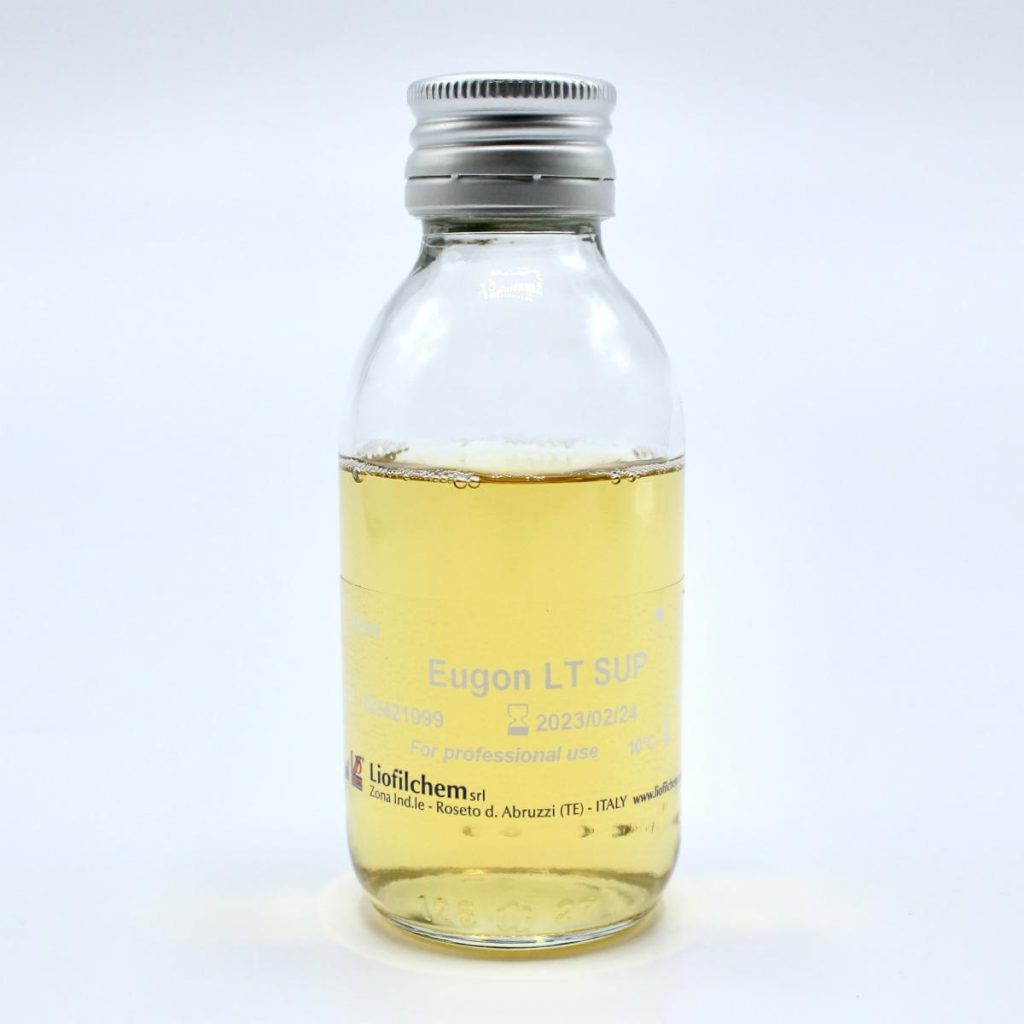Untreated municipal solid wastes cause several environmental and health problems including the release of methane gas that contribute to greenhouse effect and the contamination of groundwater by the leachate released from the landfill sites. Leachate is the fluid portion of municipal solid wastes that squeezes out from the dumpsites and finds its way into groundwater or the surrounding environment. The release of leachate from a landfill could be as a result of rainfall percolation through the solid wastes in the landfill site or from the moisture content of the municipal wastes itself. The microbiology of landfills encompasses the diversity of microbial activity that is found in landfills, and the role played by microbial activity in the degradation and/or recycling of the municipal solid wastes. The decomposition of solid wastes materials in landfills is primarily mediated by microorganisms through different microbial processes as well as the physical and chemical parameters and the nutrient or substrate composition of the landfill site.
Most importantly, the microbial communities that abound in landfills include various methanogenic and methanotrophic bacteria and some members of the domain archaea that can thrive in harsh (anaerobic) environments obtainable in waste dumping sites. Molecular studies using 16S and 18S rRNA-targeted oligonucleotide probes have identified certain microbes including bacteria, eukaryotes such as anaerobic fungi and members of the domain archaea as the commonest organisms that make up the microbial community of landfill sites. The microbial activities going on in any landfill site at any given time varies from time to time due to the continuous lifting and deposition of solid wastes at the site. However, the different stages involved in the microbial degradation of solid wastes at landfills usually include acclimation stage, transition stage, acidogenesis, and methanogenesis stage.
The heterogeneous nature of the solid wastes allows different microbial community to form; and this sets the foundation for the degradation of the solid wastes. Celluloses, hemicelluloses, lignin and proteins are the major chemical compositions of municipal solid wastes. While cellulose, hemicelluloses and proteins are biodegradable in nature and easily degraded by microbes, lignin is more recalcitrant to degrade and requires more microbial activity for its degradation. In landfill bioreactors, the solid wastes in the reactor are usually provided with water and nutrients that stimulate rapid microbial growth and allows the process to go from acclimation, transition, and acidogenesis and onto the stage where methane gas is finally produced (i.e. the methanogenesis stage). At the acclimation stage, the microbes source their carbon from the easily degradable solid wastes such as food materials present in the landfills.
The atmospheric oxygen acts as the electron acceptor; and as oxygen is used up, the solid wastes gradually enters the transition stage – where complex organic materials are degraded into simpler organic acids such as acetic acid and carbonic acids. These organic acids are responsible for driving the solid wastes into the acidogenesis stage. Water is added at this stage; and as an anaerobic environment builds up, the anaerobes utilize other electron acceptors such as nitrates and sulphates. The microbial community in the bioreactor continues to increase until the nutrients are used up and other environmental conditions becomes limiting. Methanogenic bacteria ferment the organic acids to methane gas and carbondioxide.
Landfills are land sites meant for the disposal of solid waste materials. It is the oldest form of waste treatment or disposal; and the wastes are usually buried into the soil in such sites or heaped upon previously deposited solid wastes. Landfills can also be known as dumping grounds; and it is one out of several options including incineration and composting that is used for the management of municipal solid wastes. Usually, wastes from domestic areas, industries and other wastes from the environment are conveyed in waste disposal vehicles or trucks and transported to these sites where they will be offloaded and allowed for further processing. The waste materials conveyed to the landfills are usually wastes that cannot be recycled, reused or recovered back into the land; and because such wastes contain minimal amounts of oxygen and water required for their further breakdown, they are usually buried into the ground in some cases like when further treatment or processing of the wastes is not required.
Conventional landfills are not designed to breakdown or treat waste materials. They only serve as dumping sites for municipal solid wastes. A secure landfill is a carefully engineered depression in the ground or built on top of the ground) into which municipal solid wastes are put. And such landfills are constructed in such a way that the effluents from such sites (i.e. the leachate) do not contaminate the nearby environments or groundwater. In many modern cities, landfills are well-engineered facilities that are located, designed, operated, and monitored to ensure compliance with certain federal or state laws that ensures that waste materials are properly disposed and/or managed or treated.
Landfilling still remains a common practice in the management of municipal solid wastes in many countries; and this practice is very common in most developing countries where well-engineered facilities or landfill bioreactors for the processing and disposal of solid wastes are still lacking. The anaerobic activities going on in landfills lead to the production of gases. Gases such as methane gas are produced in landfills due to the anaerobic digestion of the wastes carried out by microbes inherent in the wastes. The gases produced can be recovered and used for other economic purposes such as for electricity generation. In other cases, the gases can be flared.
Gases from landfills (if not harnessed) can build up to harmful levels that affect the environment and other living things in the region. For example, the methane gas generated by decaying organic wastes in landfills is a potential greenhouse gas that can cause havoc in a given area since the gas is flammable and cause explosion. The odour that normally characterizes such environments where municipal wastes are deposited also has negative impact on the health of humans. The flammable methane gas can affect the vegetation around landfill sites when any explosion due to methane gas build up results from them.
In some developed countries, the negative influence of methane gas from landfill sites on the environment have been mitigated through the construction and management of landfill bioreactors – which are used for the processing of municipal solid wastes. Such bioreactors (which are usually constructed at landfill sites) are used for the controlled degradation and processing of municipal solid wastes; and these bioreactors help in the proper harvesting of methane gas so that they do not get released into the atmosphere to contribute to the already building problem of global warming that the world is now living with.
Effluents from landfills can also pollute the soil, underground water and aquifers. However, the economic potential of landfills is enormous. In many developing countries, the wastes in landfills are sorted by waste pickers who scavenge landfills for re-usable solid waste products that can be transformed or sold out for other commercial purposes. And this has helped provide jobs for landfill scavengers. Landfills provide a cost-effective approach to waste management especially in places with vast open spaces or lands. Though landfills are not the best methods or approaches for the effective disposal and management of municipal wastes, it is still a practicable system for waste management in many countries.
And the abundant sources of re-usable materials and energy (especially landfill gas) that abound in landfill sites makes it another avenue through which income and energy can be generated for other commercial purposes. The effective management of municipal solid wastes including waste collection, treatment, recycling and disposal usually involves a multidisciplinary approach involving different area of expertise including microbiology, solid waste managers, civil engineers and environmental engineers.
References
Abrahams P.W (2006). Soil, geography and human disease: a critical review of the importance of medical cartography. Progress in Physical Geography, 30:490-512.
Ahring B.K, Angelidaki I and Johansen K (1992). Anaerobic treatment of manure together with industrial waste. Water Sci. Technol, 30, 241–249.
Andersson L and Rydberg L (1988). Trends in nutrient and oxygen conditions within the Kattegat: effects on local nutrient supply. Estuar. Coast. Shelf Sci, 26:559–579.
Ballantyne A.P, Alden C.B, Miller J.B, Tans P.P and White J.W.C (2012). Increase in observed net carbon dioxide uptake by land and oceans during the past 50 years. Nature, 488: 70-72.
Baumgardner D.J (2012). Soil-related bacterial and fungal infections. J Am Board Fam Med, 25:734-744.
Bennett E.M, Carpenter S.R and Caraco N.F (2001). Human impact on erodable phosphorus and eutrophication: a global perspective. BioScience, 51:227–234.
Bunting B.T. and Lundberg J (1995). The humus profile-concept, class and reality. Geoderma, 40:17–36.
Chang S.T (2006). The world mushroom industry: trends and technological development. International J. Medicinal Mushrooms, 8:297-314.
Jee C and Shagufta (2007). Environmental Biotechnology. APH Publishing Corporation, Darya Ganj, New Delhi, India.
Maier R.M, Pepper I.L. and Gerba C.P (2000). Environmental Microbiology. Academic Press, San Diego.
Miguel A, Manuel F, Francisco J.P and Antonio B (2006). Environmental biocatalysis: from remediation with enzymes to novel green processes. TRENDS in Biotechnology, 24(6):1-7.
Mishra B.B, Nanda D.R and Dave S.R (2009). Environmental Microbiology. First edition. APH Publishing Corporation, Ansari Road, Darya Ganj, New Delhi, India.
Paul E.A (2007). Soil Microbiology, ecology and biochemistry. 3rd edition. Oxford: Elsevier Publications, New York.
Pelczar M.J Jr, Chan E.C.S, Krieg N.R (1993). Microbiology: Concepts and Applications. McGraw-Hill, USA.
Pelczar M.J., Chan E.C.S. and Krieg N.R. (2003). Microbiology of Soil. Microbiology, 5th Edition. Tata McGraw-Hill Publishing Company Limited, New Delhi, India.
Pepper I.L and Gerba C.P (2005). Environmental Microbiology: A Laboratory Manual. Second Edition. Elsevier Academic Press, New York, USA.
Roberto P. Anitori (2012). Extremophiles: Microbiology and Biotechnology. First edition. Caister Academic Press, Norfolk, England.
Salyers A.A and Whitt D.D (2001). Microbiology: diversity, disease, and the environment. Fitzgerald Science Press Inc. Maryland, USA.
Sawyer C.N, McCarty P.L and Parkin G.F (2003). Chemistry for Environmental Engineering and Science (5th ed.). McGraw-Hill Publishers, New York, USA.
Ulrich A and Becker R (2006). Soil parent material is a key determinant of the bacterial community structure in arable soils. FEMS Microbiol Ecol, 56(3):430–443.
Discover more from #1 Microbiology Resource Hub
Subscribe to get the latest posts to your email.



